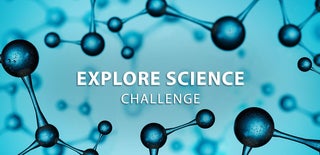Introduction: Magical Milk
hi guys,
this is a simple kitchen chemistry experiment. some unusual interactions takes place when you mix a little milk, drop of liquid dish wash and food coloring. this will be a amazing experiment to show in front of little kids.
Supplies
1. Milk - as required
2. food color - 2 or 3 colors
3. cotton buds - 1
4. liquid soap oil - few drops
5. tray - 1
Step 1: Pour Milk in the Tray
pour required amount of milk in a tray to cover complete bottom.
allow the milk to settle down before moving to next step
Step 2: Add Food Colors
add few drops of food color, i used orange red and yellow colors to the milk.
try to put the drop close together in the center of the tray of milk.
Step 3: Tip Soap Liquid
find a clean cotton bud for this process.
place a drop of liquid dish soap on the end of cotton bud. place the soapy end of the cotton bud in the middle of the milk. try not to stir the mix, just touch it with the tip of the cotton bud.
hold it there for 10-15 seconds.
then enjoy the burst of colors.
Step 4: How Does It Work
milk is mostly water, but it also contains vitamins, minerals, proteins and tiny droplets of fat suspended in solution. Fats and protein are sensitive to changes in the surrounding solution (milk).
The secret of the bursting colors is in the chemistry of that tiny drop of soap. like other oils, milk fat is a non-polar molecule and that means it doesn't dissolve in water. when soap is mixed in, however, the non-polar (hydrophobic) portion of micelles (molecular soap structures in solution) break up and collect the non-polar fat molecules. then the polar water molecule with the fat held inside the soap micelle. thanks to the soap connection, literally, the non-polar fat can be carried by the polar water. this is the fun begins.
the molecules of fat bend, roll, twist and contort in all directions as the soap molecules race around to join up with the fat molecules. during all of this fat molecule gymnastics, the food coloring molecules are bumped and shoved everywhere, providing an easy way to observe all the invisible activity. as the soap becomes evenly mixed with the milk, the action slows down and eventually stops. This is why milk with a higher fat content produces a better explosion of color-there's just more fat to combine with all of those soap molecules.
try adding another drop of soap to see if there's any more movement. if so, you discovered there are still more fat molecules that haven't found partner at the big color dance. add another drop of soap to start the process again.
Step 5: Take It Further
repeat the experiment using water in place of milk. will you get the same eruption of color?
what kind of milk produces the best swirling of color, skim, 1%, 2%, or whole milk? why? this is the basis of a great science fair projects as you compare the effect that the dishwashing soap has on a number of different liquids. do you see any pattern in your observations?

Participated in the
Explore Science Challenge













